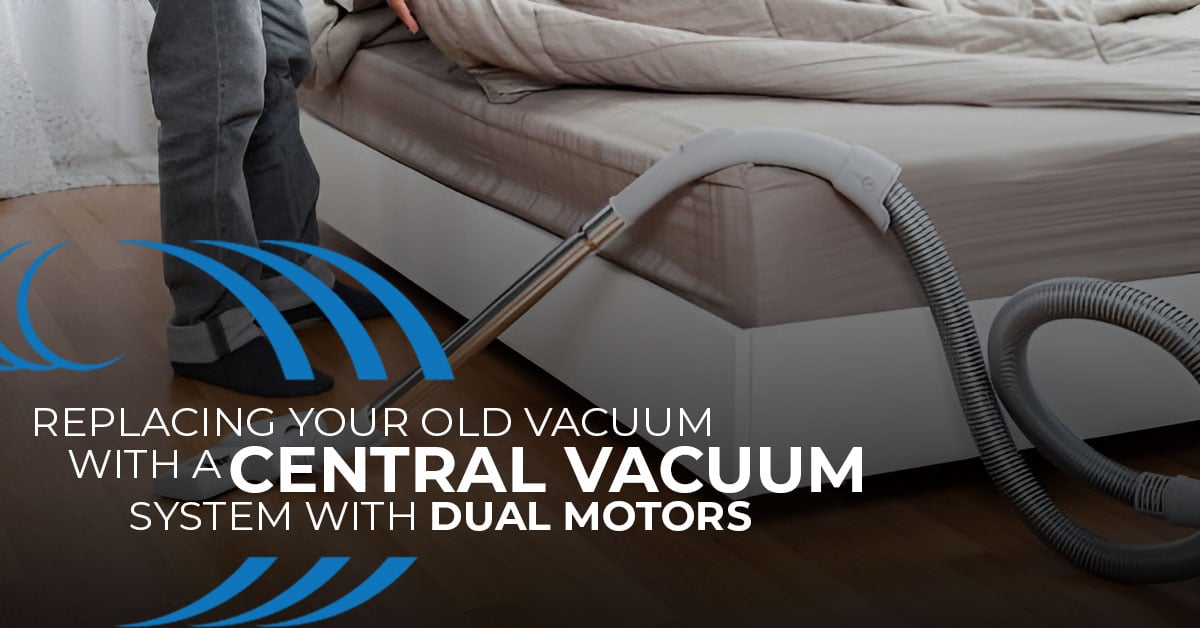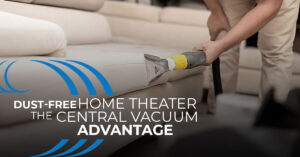
Boosting Productivity in Office Buildings with Central Vacuum
In today’s fast-paced work environment, maintaining a clean and organized office space is crucial for productivity. Office buildings often struggle with keeping their premises clean

Vacuuming is an essential part of maintaining a clean and healthy home. But if your old vacuum isn’t doing the job anymore, it might be time for an upgrade. One option to consider is replacing your old unit with a central vacuum system featuring dual motors. This article will guide you through the process of a central vacuum system retrofit, the advantages of a dual motor central vacuum upgrade, how to replace old vacuum motors, DIY central vacuum motor replacement, and the installation of central vacuum systems in existing homes.
Retrofitting your home with a central vacuum system involves installing a network of pipes within your walls that connect to a central power unit. This unit is typically located in a garage, basement, or utility space. Inlets are installed at convenient points throughout your home, allowing you to simply plug in a hose and start cleaning. The process might sound daunting, but with careful planning and professional help, it’s entirely achievable even in existing homes.
Upgrading to a dual motor central vacuum system has several benefits. Dual motors provide superior suction power, resulting in more effective cleaning. They also tend to have longer lifespans than single motor systems. This means less hassle with maintenance and replacements, and more time enjoying a cleaner, healthier home.
If your old vacuum isn’t performing as well as it used to, it might be because the motor is failing. Replacing a vacuum motor can give your old unit a new lease on life. However, it’s worth considering whether a complete system upgrade might be a better investment in the long run. A central vacuum system, particularly one with dual motors, offers several advantages over traditional portable vacuums, including better cleaning performance, quieter operation, and improved indoor air quality.
For those handy with tools, replacing a central vacuum motor can be a DIY project. It involves removing the old motor from the power unit, purchasing a suitable replacement, and installing the new motor. However, it’s essential to follow manufacturer instructions and safety precautions carefully. If you’re not comfortable working with electrical components, it’s best to hire a professional.
Installing a central vacuum system in an existing home is a more complex task than in a new build, but it’s certainly possible. The process involves running pipes through the walls, attic, or basement to connect the power unit to the inlets. It requires careful planning and potentially some minor construction work to install the piping and inlets. Once again, while it can be a DIY project for those with the necessary skills, many homeowners prefer to hire professionals to ensure the job is done correctly and efficiently.
In conclusion, replacing your old vacuum with a central vacuum system featuring dual motors can significantly improve your home’s cleanliness and air quality. While the installation process requires some effort and investment, the long-term benefits make it a worthwhile consideration. Whether you choose to undertake the project yourself or hire professionals, upgrading to a central vacuum system could be a game-changer for your home cleaning routine.

In today’s fast-paced work environment, maintaining a clean and organized office space is crucial for productivity. Office buildings often struggle with keeping their premises clean

Central vacuums in animal shelters & vet clinic: Explore how these systems boost hygiene, efficiency, and air quality.

In the world of home entertainment, a home theater is a luxury that many homeowners dream of. It’s an immersive experience that brings the magic

A central vacuum system is a significant investment that promises convenience, powerful suction, and improved indoor air quality. However, choosing the right central vacuum hose
Our home automation products are at the forefront of technology, offering a blend of convenience, security, and efficiency. As a Homewave dealer, you’ll be part of a network transforming homes into smart, futuristic spaces.
Embark on this rewarding journey with us and leverage the power of innovative technology.
Please fill out this form and become a Homewave Dealer.